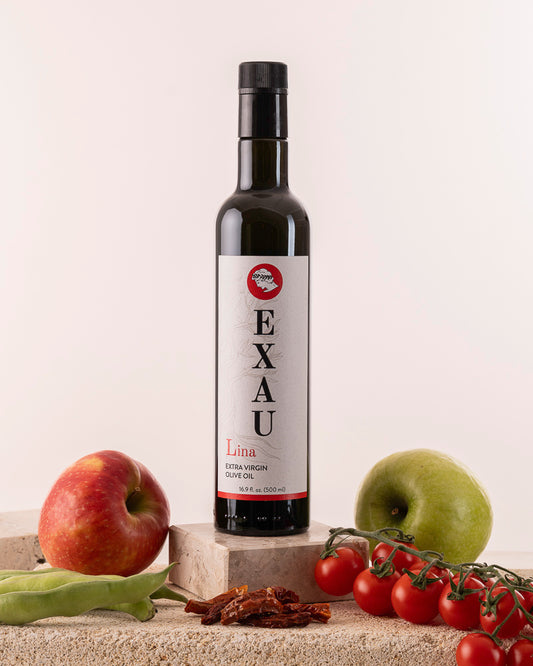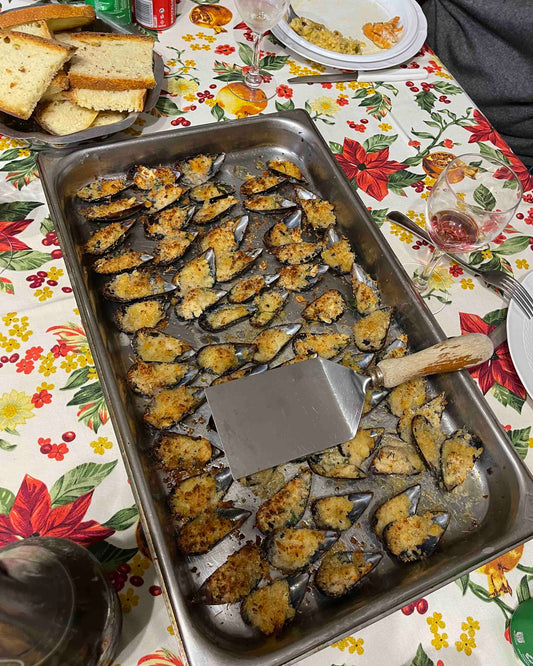Pizza Margherita is one of the most traditional and delicious Italian recipes in existence. With a perfectly chewy dough layered with freshly crushed San Marzano tomatoes, fior di latte mozzarella, fresh basil, and generous glug of premium EVOO it's a dish everyone always enjoys!
Make this for pizza night with your friends and family, throw a casual dinner party, or make it ahead and take on a picnic. Here's how to make the an amazing Pizza Margherita at home.

The History of Pizza Margherita
Pizza is a huge part of Italy’s food culture and it has an incredibly rich history. The root of the food goes back well over 12,000 years with the creation of bread in the Middle East. According to research, wheat is from the Fertile Crescent, an area in the Middle East occupied by the countries we now call Jordan, Syria, Palestine, and several others.
It's commonly believed that wheat then made its way to Italy via the Greeks and was eventually cultivated by the Romans, who have a very well documented history with grains, especially bread.
Over the centuries there have been many different styles of bread making in Italy. We see the beginning of what becomes pizza in the 500s and 600s when Italians would make a soft dough served with cheese, fresh basil, and black pepper. But the era of modern pizza began in Naples, Italy during the early 1700s.
There are several testimonials of this in ancient transcripts/books:
In “Napoli dintorni e contorni” (1830) a man named “Riccio” details a pizza served with tomato, mozzarella, and fresh basil which was eaten and enjoyed by all social classes.
In the book “Corricolo” (1843) written by Alexandre Dumas, it states the following (the entry has been translated into English):
“Pizza is a kind of ‘stiacciata’ as if they do in Saint-Denis. It is round in shape and is made with the same dough as for bread: it varies in diameter according to price … At first glance it looks like simple food, it will look like a complicated food. The pizza is with oil, lard, suet, tomato, fish. ”
In the “Usi e Costumi di Napoli” (1866) Francesco de Boucard describes the most typical pizzas as (the entry has been translated into English):
"Marinara, Margherita, and Calzone. The pizza was served with tomato, mozzarella, and basil. The mozzarella was cut in thin slices and arranged in the shape of a daisy."
Serving Styles
In the beginning, pizza was served straight from the oven as a street food. Then later, it was served in and from dedicated pizzerias. You can find the food in all different types of restaurants from high end to food trucks and with a huge price range.
Different Types of Pizza
Today you can find pizza in all shapes and forms all over the world and with loads of different toppings. For example, Pizza Romana is from the region of Lazio is very thin and crunchy almost like a cracker. Then there's square pizza which is made all over Italy and feels very much like a progression of the classic focaccia.
In the U.S.
Pizza arrived in the U.S. in the 19th century and was mostly eaten as a street food. It was found mostly in Italian neighborhoods in bigger cities with a large immigration population such as San Francisco, New York, Philadelphia, and Chicago.
In some cities, it ‘evolved’ into a different version of the food such as: New York style, deep-dish in Chicago, and rolled pizza in Philadelphia.
In Naples
Today when we talk about pizza the default should be the Napoletana stlye because that's the origin of the dish. Neapolitan Pizzaiuoli take their jobs very seriously. The purists say there are only two kinds of pizza, Marinara and Margherita.
True Pizza Napoletana is cooked at a temperature of 815° - 905°F (435° – 485°C) and within 50-90 seconds. It has very pillowy crust and almost gooey and melted center. Pizzaiuoli traditionally use a wood burning over that takes several hours to heat up and is tended to extremely carefully.
It's truly a craft requires years of training, and often schooling, in order to make a perfect pizza.

What is Pizza Margherita?
Pizza margherita is a classic type of pizza from Naples, Italy and is made with San Marzano tomatoes, Fior di Latte mozzarella cheese, fresh basil, and high-quality extra virgin olive oil.
What are San Marzano Tomatoes?
They're a cultivar of tomato originally from Campania, Italy. True DOP San Marzano tomatoes only grow at the bottom of Mount Vesuvius, an active volcano located about 9 km east from the famous city of Naples.
About Mount Vesuvius
Mount Vesuvius is a very famous volcano. In 79 AD it erupted and completely destroyed several Roman cities including the Oplontis, Stabiae, Herculaneum, and the most famous Pompeii.
What is Fior di Latte Mozzarella?
It translates to 'flower of the milk' and is made with whole cow's milk. Typically, mozzarella is made with buffalo's milk.
How to Make Pizza Margherita
You will need at least 30 hours to make this recipe so make sure you plan ahead. But don't worry about it being too much work, most of the time is waiting for the dough to rise. You can use a KitchenAid or just your hands an a really big bowl to make this recipe, whatever you prefer.
Add the flour, yeast, and water to a bowl and mix together, you want the yeast to really start to dissolve and start working. Add the salt and extra virgin olive oil and keep working the dough until it becomes quite smooth. Then cover the bowl with a towel or plastic wrap to prevent the dough from getting hard.
Cut the dough into equal pieces, shape into a ball, and then place them into a covered container. We like to use stackable proofing trays, since we make pizza a lot and they store quite easily. If you don't have access to big proofing trays or something similar you can use a few different soup bowls and just covered them.
This is where you just leave the dough for a day and come back in a day. It doesn't have to be an exact 24 hours because refrigeration slows down the fermentation process of yeast, however, if you wait too long the dough can over proof. We usually wait between 22 to 36 hours depending on our schedule.
Take the dough out several hours before planned use. However, if you're in a place that's extremely warm pay close attention to the dough because it can overproof. It should sit out at about room temperature.
Shortly before you're going to start making the pizzas make the sauce and assemble all of your toppings mise en place because the cooking process goes extremely fast when you have a hot oven and you don't want to be messing around with your toppings last minute.
Shape your dough by first gently rotating the dough vertically in your hands, then you can place it on a well floured surface and push our the edges with your finger tips. Then add your toppings and bake!
Shop our collection of high quality Italian Extra Virgin Olive Oils!
Other recipes you might like...
Hey, we wrote a cookbook and guide called The Olive Oil Enthusiast, have you ordered it yet?
If you make this recipe please let a comment and let us know! We love to hear from you. If you’re on Instagram, Facebook, or TikTok don’t forget to tag us and use #EXAUoliveoil so we can repost!








